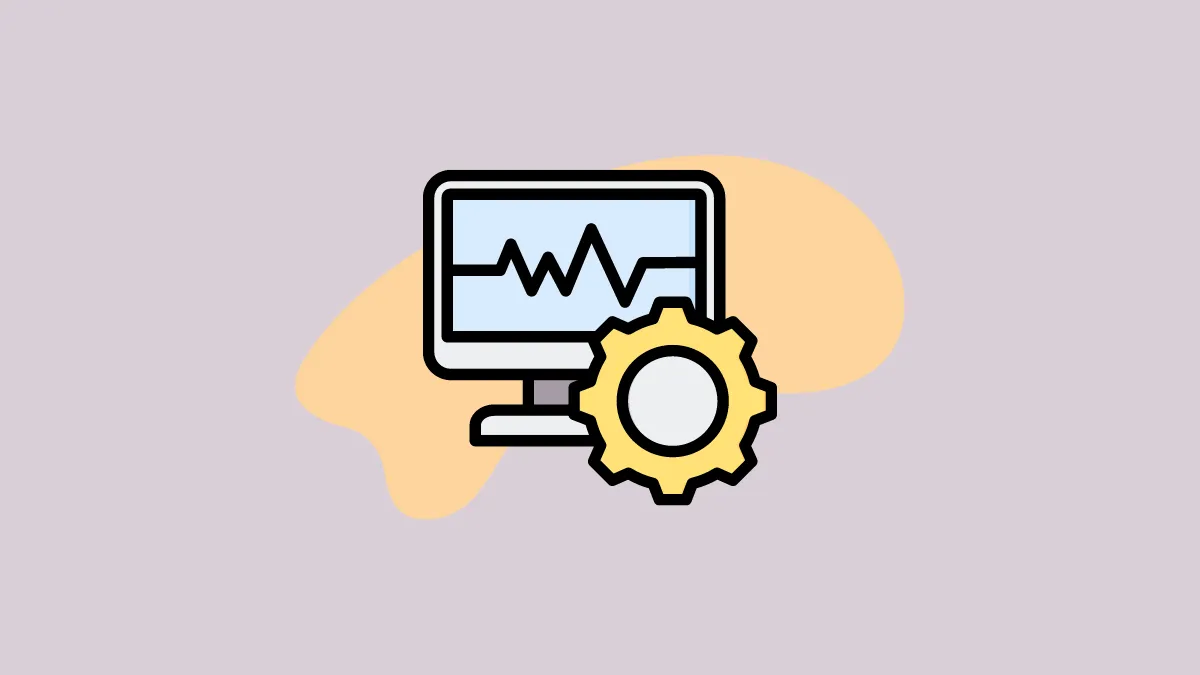Quick Info
- Windows 11 has built-in tools to track your data usage.
- You can set data limits and get alerts when approaching your cap.
- You can view usage by app to identify data-hungry programs.
Method 1: Using the Task Manager
- Open the Windows Task Manager using the
Ctrl + Shift + Esckeyboard shortcut OR by right-clicking on the taskbar and clicking on 'Task Manager'.

- When the Task Manager opens, click on the 'App History' icon on the left, which appears as a clock with an arrow pointing counterclockwise.
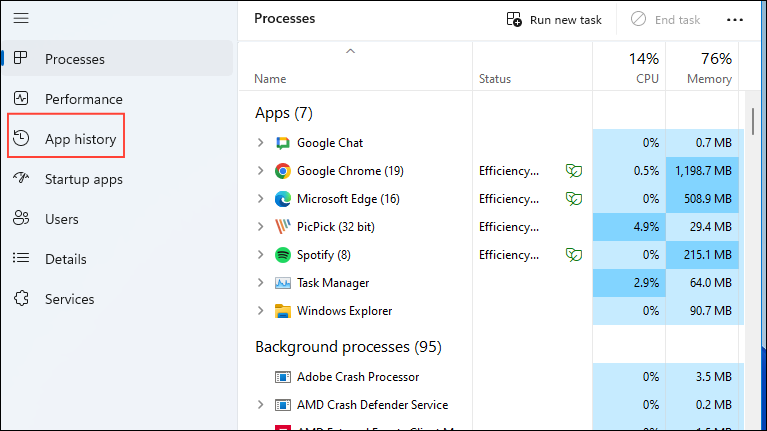
- Now, you will see all running applications on the right. To find out how much data they are using, look at the 'Network' column. You can also click on it to sort the applications by network usage.
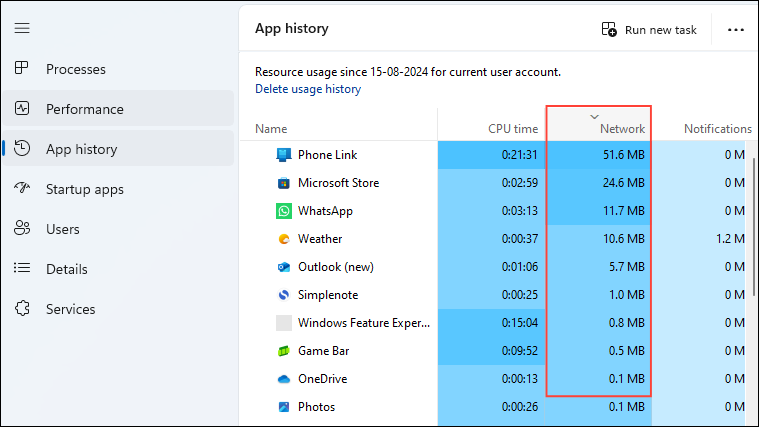
Method 2: With Advanced Network Settings
Advanced Network Settings in Windows lets you monitor your data usage, which can be very useful if you want to avoid exceeding the data cap set by your ISP.
- Open the Settings app using the
Win + Ishortcut and click on the 'Network and Internet' option on the left.
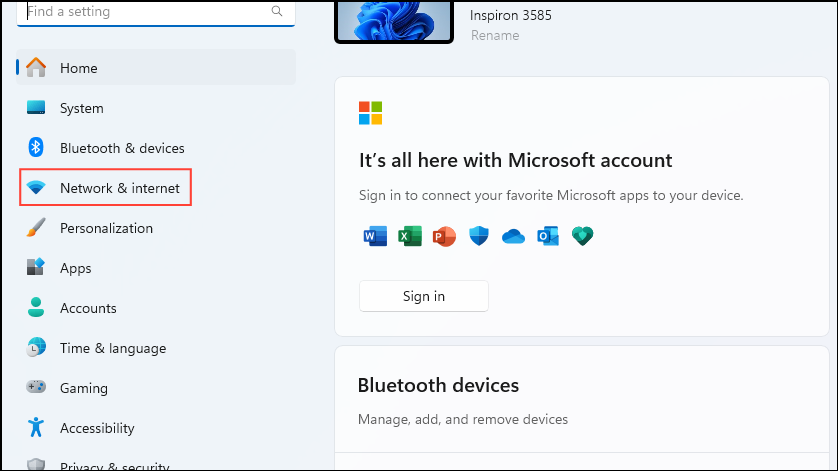
- On the Network and Internet page, click on 'Advanced network settings' at the bottom.

- Then click on 'Data Usage' on the next page.
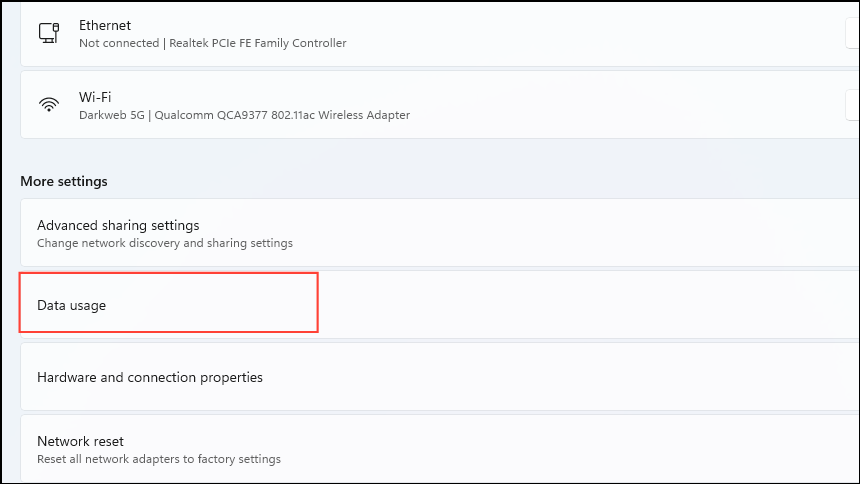
- Here, you will see your total data usage at the top, while the rest of the page shows which applications used the most data over the last 30 days.
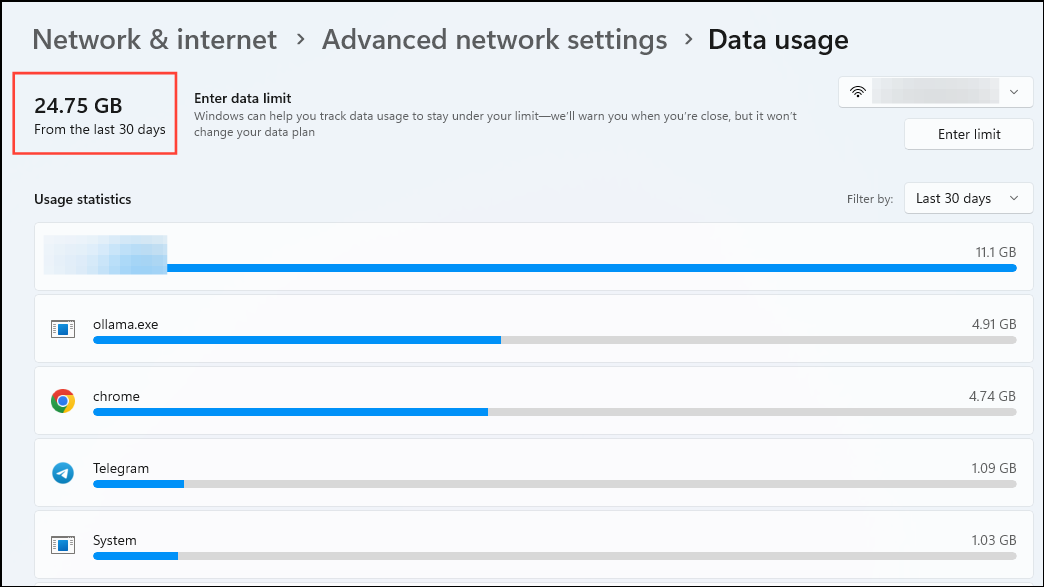
- You can also filter the data for different periods by using the dropdown menu on the right. It lets you choose between 30 days, 7 days, and 24 hours.
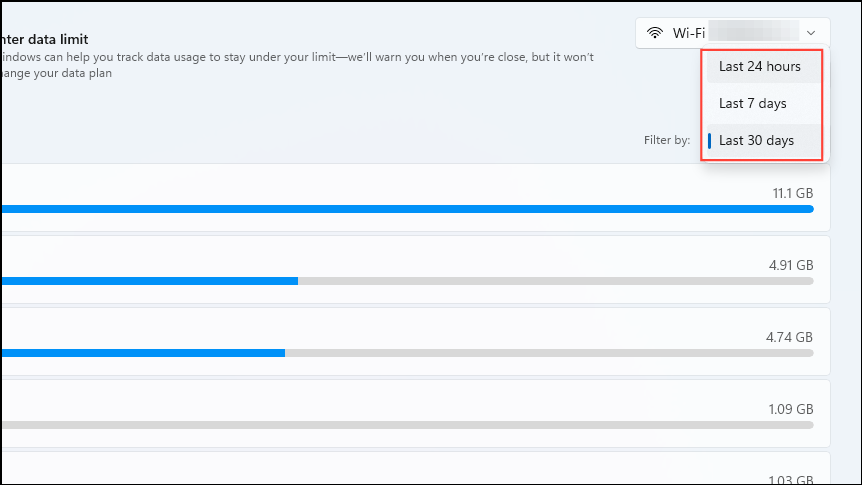
- Additionally, you can set a data limit by clicking on the 'Enter limit' button on the right.
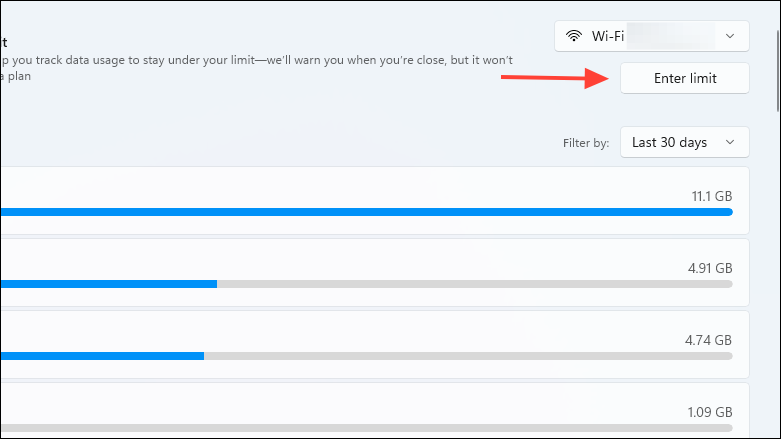
- You can then set the limit type and the data limit in GB or MB. Keep in mind that Windows does not put a hard cap on your data even when you set a limit, but will warn you when you reach it.
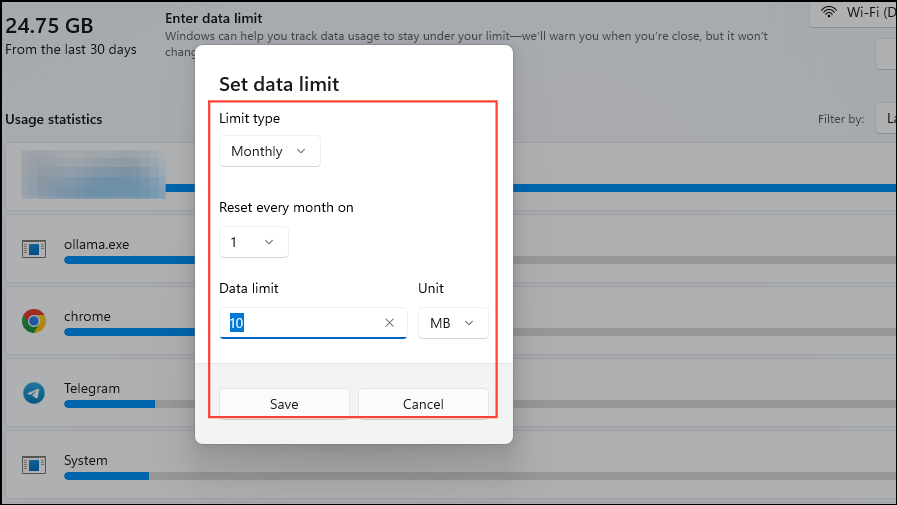
Method 3: Using the Resource Monitor
The Resource Monitor is another tool that can help you monitor your data usage in Windows.
- Open the Start menu, type
Resource Monitorand click on the program when it appears

- When the Resouce Monitor appears, click on the Network tab at the top and you will see all the processes using network resources.

Method 4: With NetworkUsageView app
NetworkUsageView is a third-party application that lets you monitor data usage in Windows.
- Visit the Nirsoft website to download and scroll down to the download option. Click on the option that is suitable for your computer.
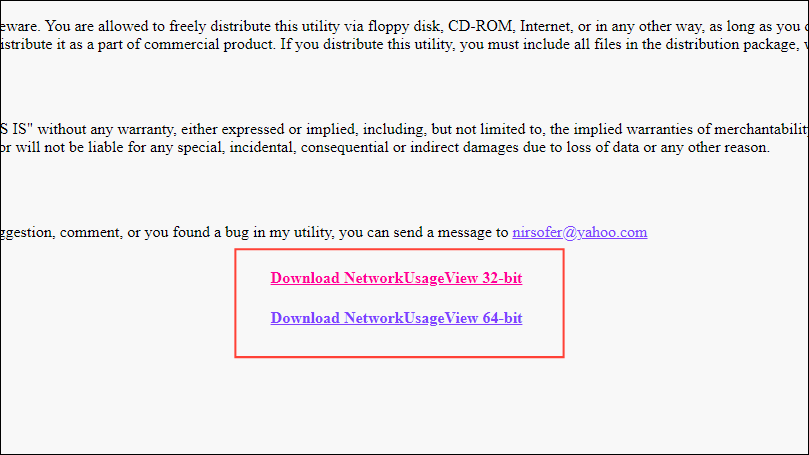
- Once it is downloaded, right-click on the zipped folder and extract it. Then right-click on the extracted file and click on 'Run as administrator'.

- You will now see the different processes running on your PC and how much data they are using.
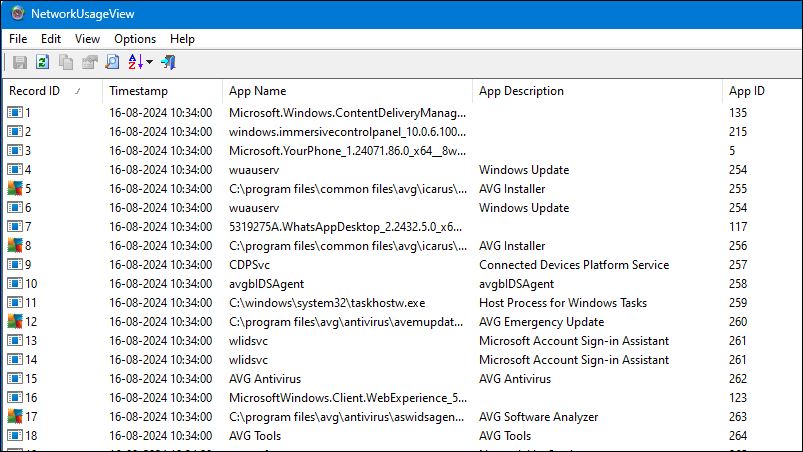
Things to know
- Like NetworkUsageView, there are several other third-party applications that can help you monitor your data usage in Windows, like GlassWire and NetBalancer.
- Windows automatically monitors your data by default, but none of the built-in tools provide in-depth information about such usage.
- If you use the Advanced Network Settings page to monitor your data usage, you can reset the data usage for a specific period.

